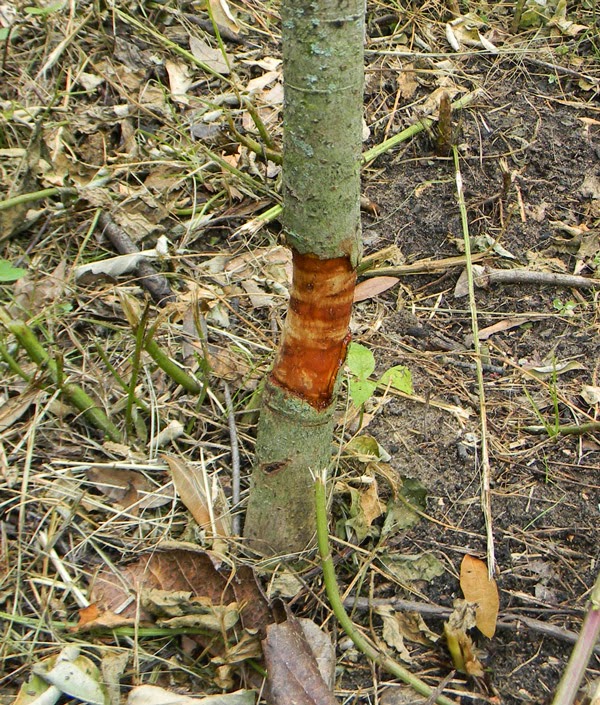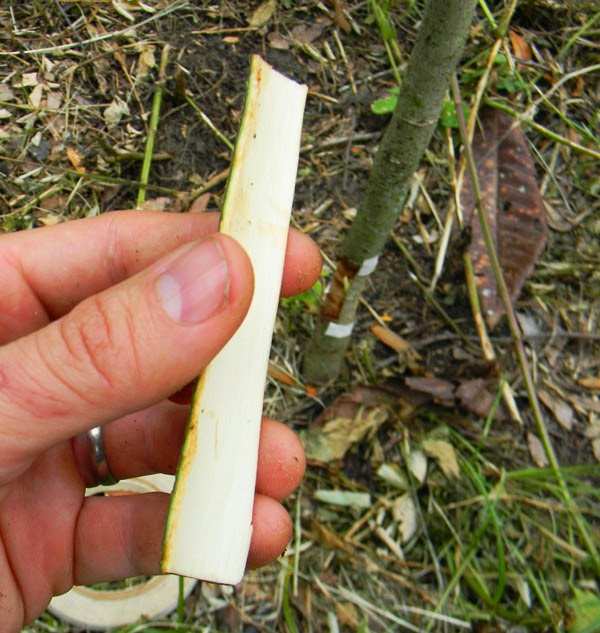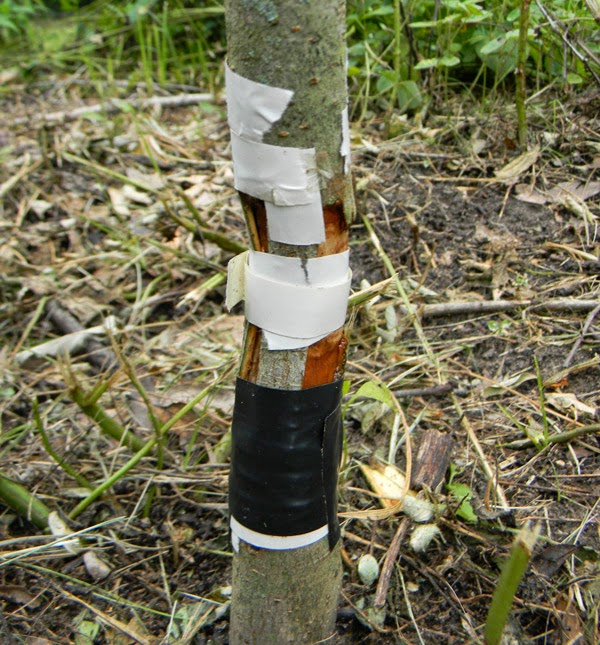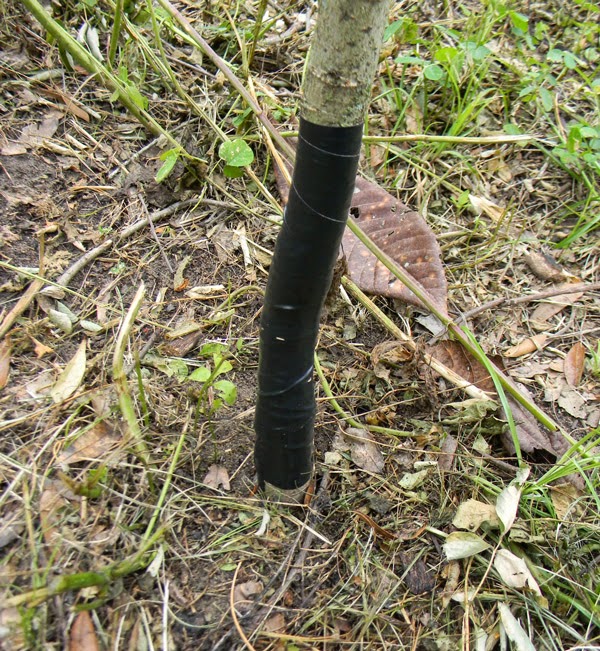What do you do when a friend helping out accidentally girdles one of your rare varieties of loquat tree with a string trimmer?
Other than publicly humiliate the poor soul on your hugely popular gardening blog, that is.
Here’s the damage:
Ouch. That isn’t going to make it without an intervention. Beneath the thin outer back of a tree are the vessels that bring water and nutrients up and down the trunk from the roots to the crown and back again.
So, not having any options other than surgery or letting the tree die, I chose to try and “bridge graft” across the damaged area. This requires cutting and connecting some strips of healthy living bark from the trunk below to the trunk above.
Here’s a piece of healthy bark cut from another loquat tree. In the background, you can see another piece I cut and attached. It takes a sure hand, a razorblade and some kind of grafting tape.
I cut three pieces and attached them to the trunk, cutting another half inch or more above and below the wound and popping in the new pieces of bark.
It still looks “ouch” and I’m not sure this will work, but it’s better than doing nothing. After attaching the pieces, I wrapped the entire wound area with nice, thick pieces of electrical tape.
UPDATE: This tree died after months of struggling; however, I was able to save the scions and graft them! Check this post out.






8 comments
So you do some trimming of undergrowth in your food forest? How cleared out do you like it? I assume you mostly let the cut plants lie there and become mulch.
And what do you do if you find poison ivy growing in there?
I do knock things down upon occasion, mostly in the paths. Ideally, it would be done with a layer of cardboard and a foot of mulch on top of that, but my area is too large for "nice" non-destructive maintenance.
I pull poison ivy as I see it, carefully. I'm not allergic but I'm sure my kids are. The stuff will come back regularly from seeds and pieces of vine so it's a common problem.
If the tree wasn't very large you may try mid air rooting . Take a gallon size ziploc, slice the slide open and half of the bottom. Dust the damaged area with rooting hormone and place the ziplick around the area and tape up the bottom and sides.. Fill the ziplock with damp peat moss and tape the top edge closed. I hope you can visualize this and you may already know about it. Has worked for me on some rare plants in the past when I owned a nursery.
Thank you – that makes sense!
That was a neat article to share!
A. Jones
Thank you. I'm hoping for the best. I was going to fix it so I thought "hey, I should just bring the camera and share what I do, whether it works or not." That way we can hopefully all learn something.
I hope it makes it! You certainly did some serious first aid on it! :) Has it been doing ok since the incident?
No wilting thus far… I have a small amount of hope it will pull through.
Comments are closed.